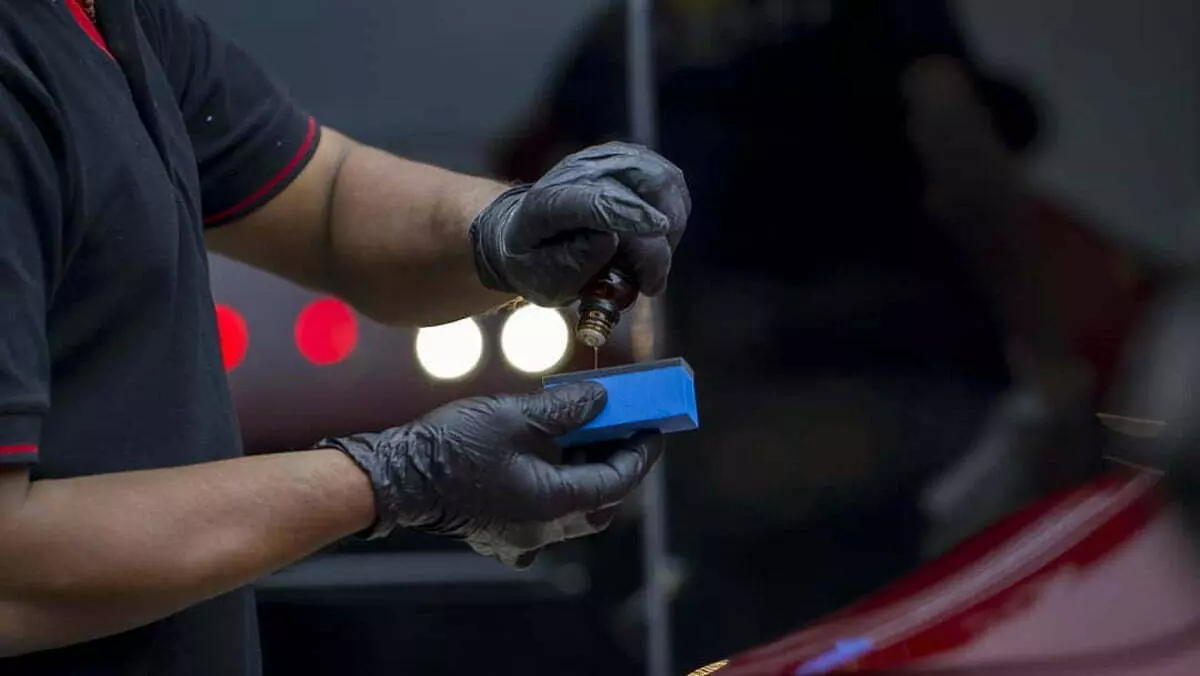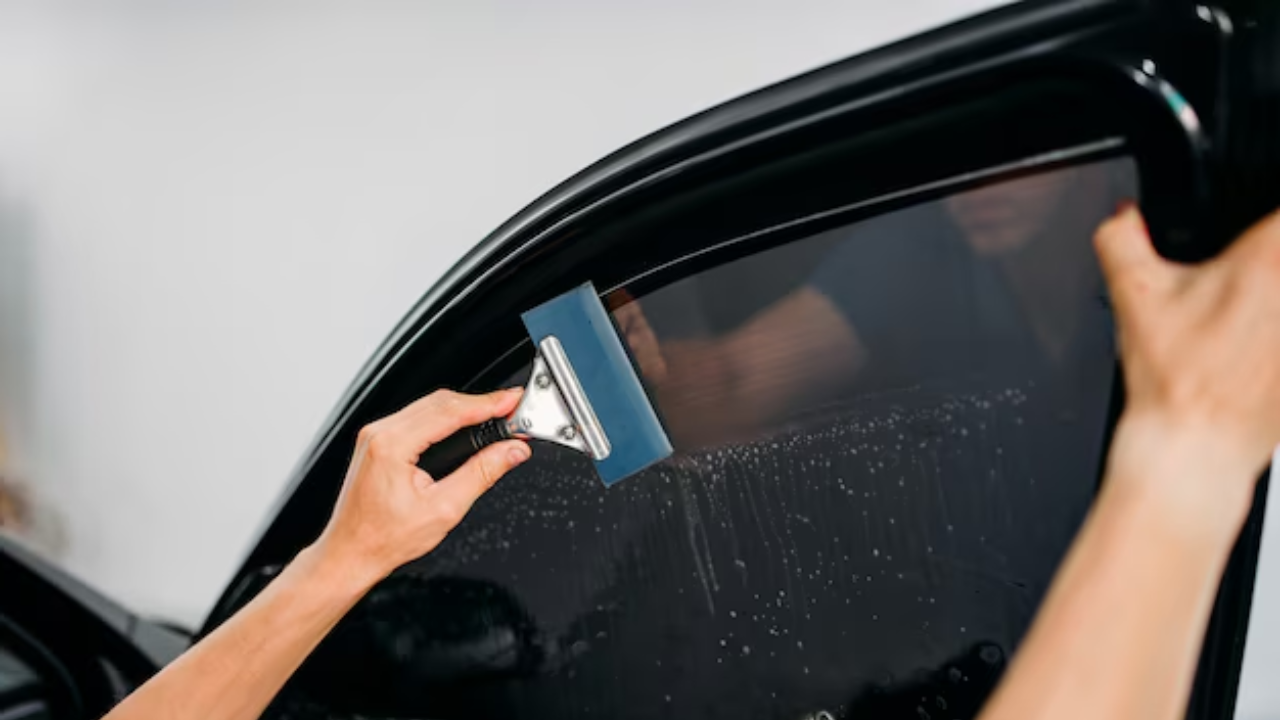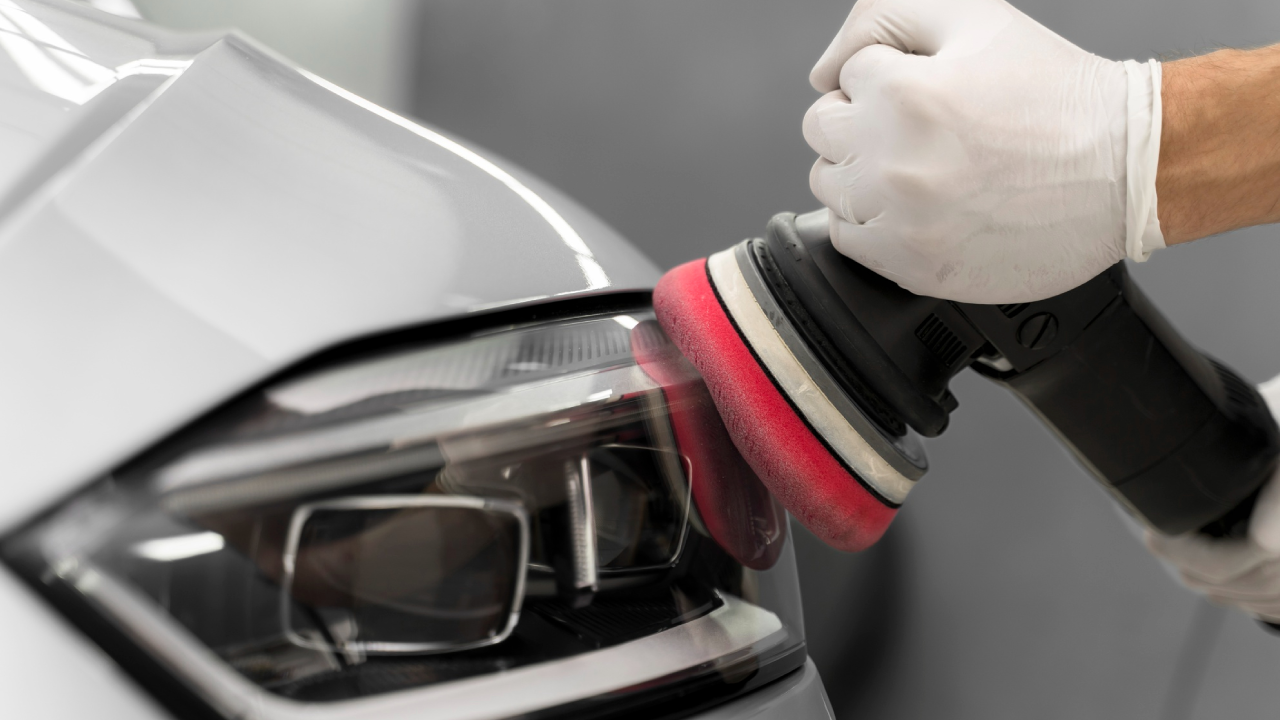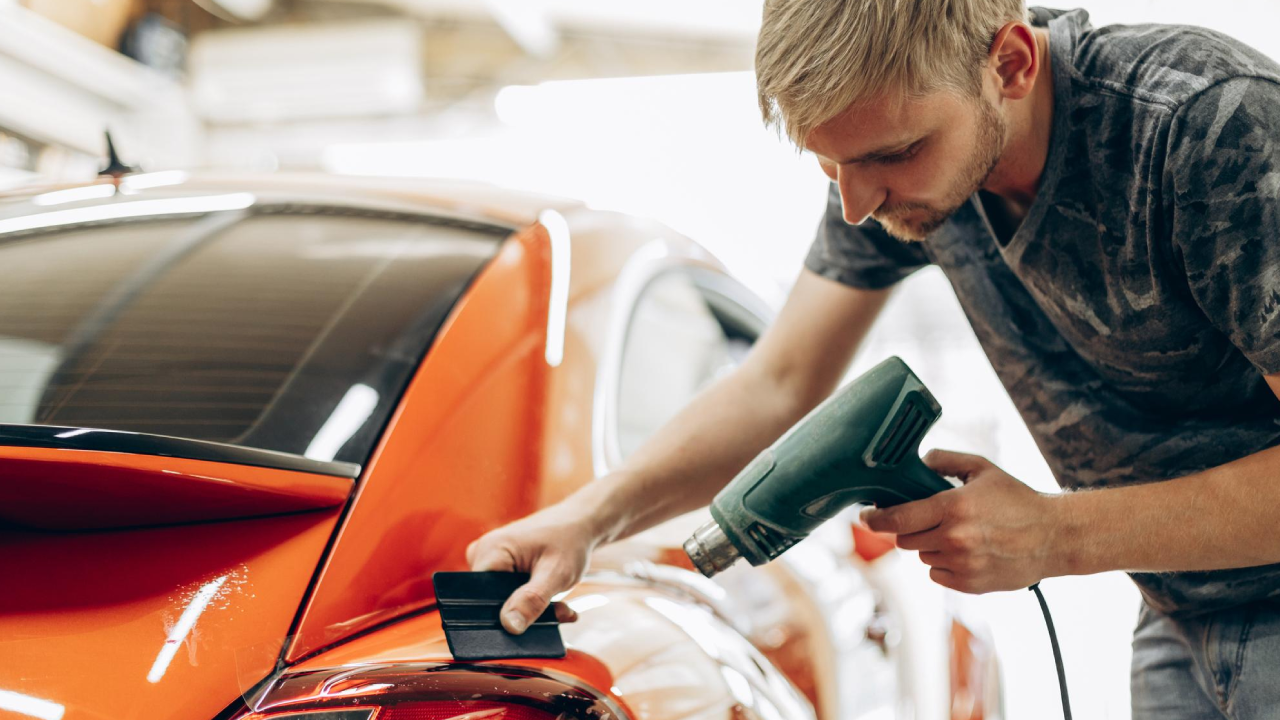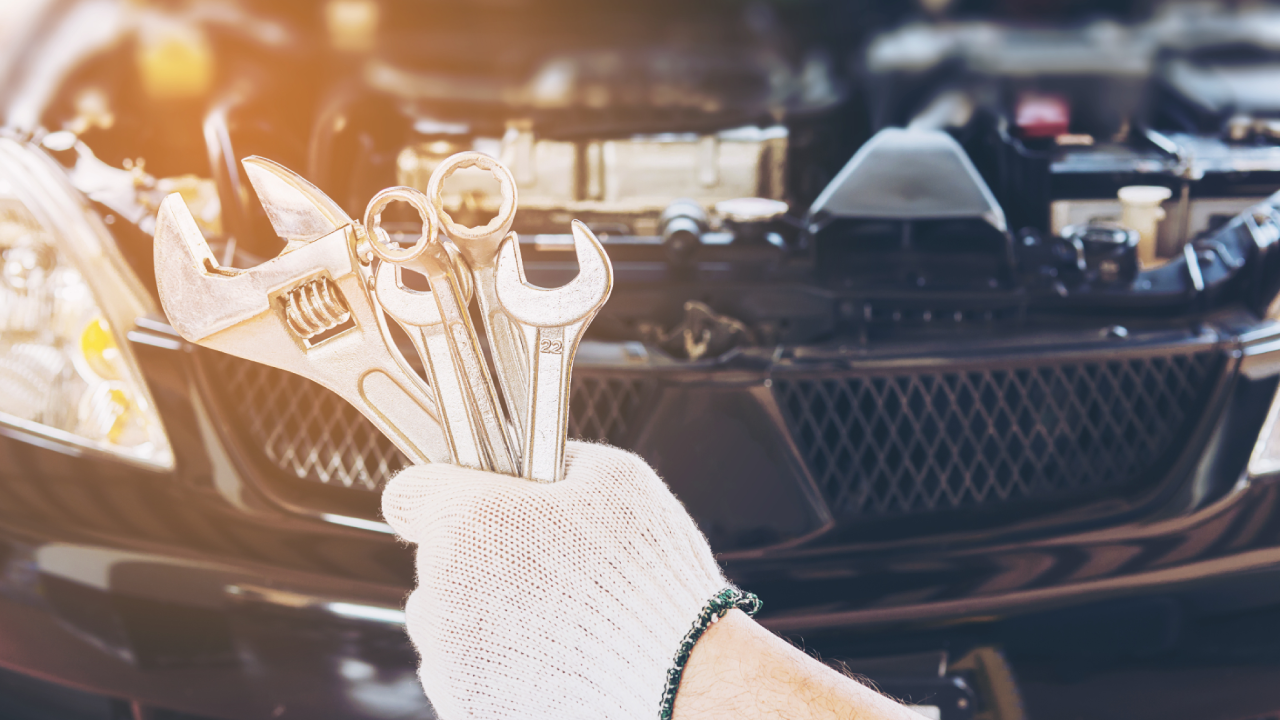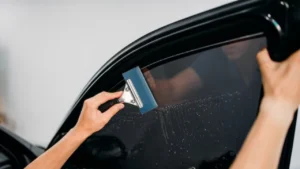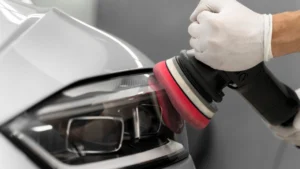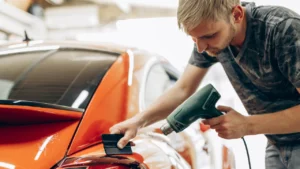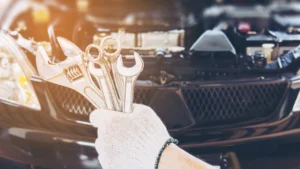Undoubtedly, ceramic coating for cars is among the most celebrated breakthroughs in paint protection for vehicles worldwide. After all, every automobile enthusiast takes pride when their car’s shine makes all heads turn.
Moreover, getting your car ceramic coated protects its original surface paint from various environmental aggressors that may cause long-term damage to the car and ruin its aesthetics too.
But, have you ever wondered WHAT exactly is in the solution of ceramic coatings and HOW exactly these ceramic coatings for cars protect their body paint?
We answer this question for you about the best ceramic coating in India. Get set for this journey.
Table of contents
What is a ceramic coating?
Ceramic coating is a liquid polymer that can be applied on the exterior surface of cars to protect them from damage. It’s made of silicone dioxide (SiO2), which provides hardness, gloss and hydrophobicity. It protects your car’s paint from various environmental damages like dust, bird droppings, tree sap and hairline scratches and preserves its natural gloss.
It makes the vehicle’s surface smoother, and easier to clean and maintain. Ceramic coatings are also used to protect automotive parts, textiles, marine equipment and construction materials.
The science of ceramic coatings
There are two main components in any ceramic car coating, resin and solvent.
The resin is usually Silicone Dioxide (SiO2), which provides the hardness, hydrophobicity and gloss factor. And since Silicon is a primary component used in making glass, ceramic coatings are also known as Liquid Glass or Glass Coatings.
The need for the second element, the solvent, arises due to the chemical nature of SiO2. The resin SiO2 is essentially melted into a liquid and stored with a solvent because when it comes in contact with open air, it solidifies.
Hence, the solvent plays an important role in ensuring that the SiO2 remains in a liquid state inside a ceramic coating bottle, making it ideal for application on the surface.
It is vital to note that the percentage of SiO2 in retaliation to the solvent and the grade of SiO2 affects the quality of the ceramic coating.
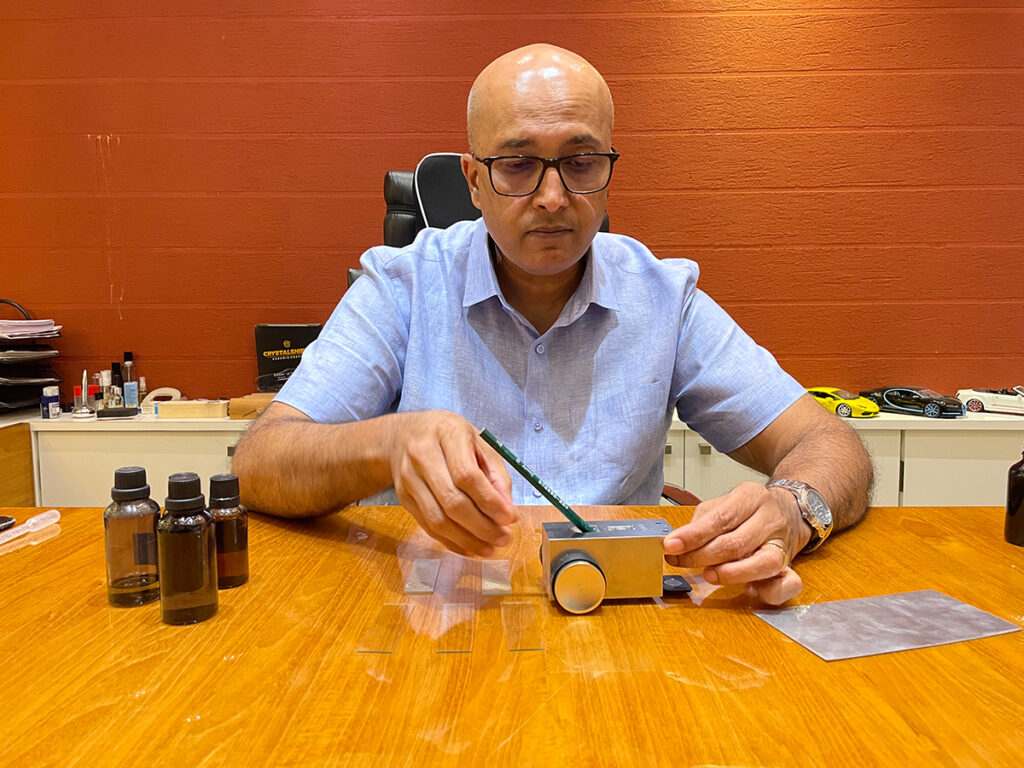
How does a ceramic coating work?
Ceramic coatings are made using nano modules which are more minute than the micropores of the paint on a car’s surface. Naturally, the nanoparticles of ceramic coating enter the micro pores of the car’s paint, forming a mechanical bond.
As mentioned earlier, as the ceramic coating on the car comes in contact with open air, it initiates the process of crystallisation. This occurs as the solvent evaporates, exposing the liquid silicon to air and leading it to harden, forming a mechanical bond with the clear coat of the car’s paint.
When the ceramic car coating forms a mechanical bond with the paint surface, the ceramic particles in the coating cross-link and bond together to create a strong, protective barrier over the paint. This barrier is highly durable and resistant to external pollutants and UV rays.
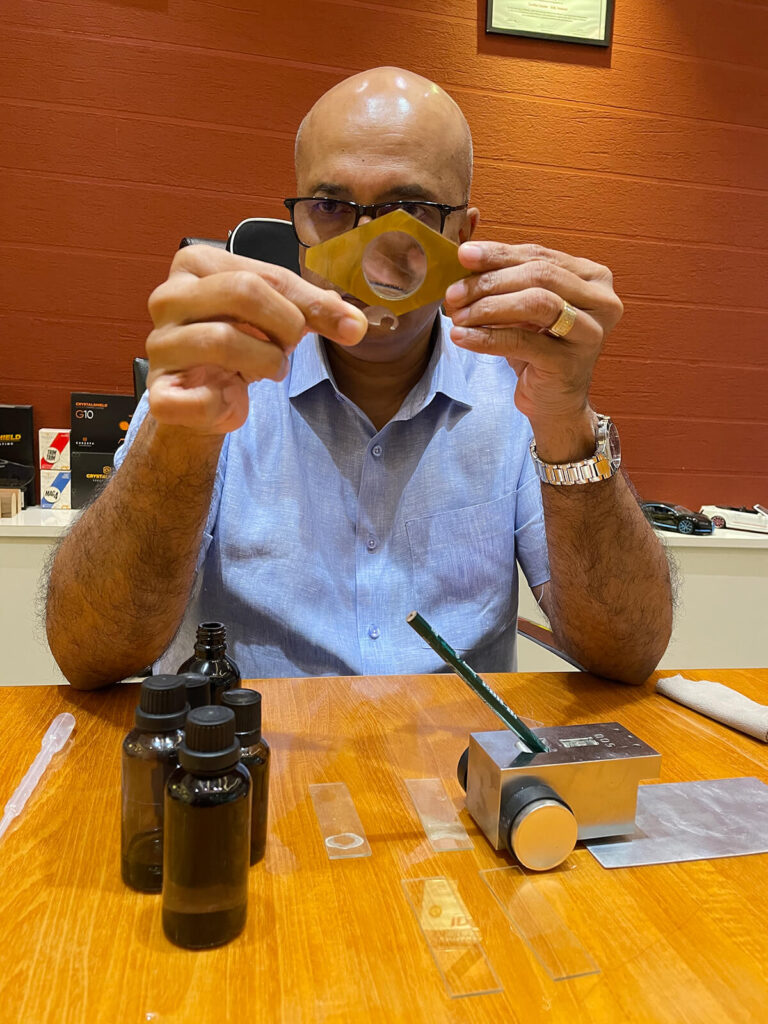
The protective properties of a ceramic coating are due to its hydrophobic properties. When water or other liquids come into contact with the coating, they bead up and roll off, taking dirt, grime, and other contaminants with them.
Due to this, the paint looks clean and also makes it easier to clean in the future.
Benefits of ceramic coatings for cars
There are several benefits to using a ceramic coating on a car, including:
Increased protection
Ceramic coatings provide a protective barrier over the paint that helps to prevent damage from environmental pollutants and scratches. This helps to keep the paint looking new for longer and maintain the car’s value.
Insane Gloss and Hydrophobicity
Ceramic coatings can enhance the appearance of a car’s paint by adding a glossy and reflective shine. The hydrophobic properties of the coating also help to maintain a clean and shiny appearance by beading up and repelling water and other liquids.
Easy maintenance
Ceramic coatings make it easier to clean a car by preventing dirt, grime, and other contaminants from adhering to the paint surface. This can save time and effort in maintaining the car’s appearance.
Protection against UV rays
Your car’s prolonged exposure to the sun can cause the paint to fade and look older. Ceramic coatings prevent UltraViolet rays from damaging the paint and maintain the car’s brilliance.
Disadvantages of Ceramic Coatings: A Balanced Perspective
Ceramic coatings offer a fantastic way to protect your car’s paint and enhance its shine. However, like any product, there are some potential drawbacks to consider before making a decision. Here’s a breakdown of some disadvantages to keep in mind:
Cost
Ceramic coating application can be expensive, especially compared to traditional waxes. The cost can vary depending on the size of your car, the quality of the coating and the complexity of the paint correction needed before application.
Not Foolproof
While ceramic coatings offer scratch resistance, they are not entirely scratch-proof. Deep scratches can still penetrate the coating and damage the paint.
Maintenance Considerations
While ceramic coatings make washing your car easier, they still require proper maintenance practices. Using harsh chemicals or improper washing techniques can damage the coating.
Professional Application Recommended
For optimal results, it’s recommended to have a professional detailer apply the ceramic coating. This ensures proper surface preparation and application for maximum adhesion and protection. However, professional application adds to the overall cost.
That was all about the ceramic coating, from what exactly are its ingredients to the science behind it.
Join the lakhs of happy customers from all over India by protecting your car with ceramic coating from CarzSpa. To all the car owners, we would love for you to visit the nearest CarzSpa Detailing Studio in your city with your beloved car. Talk to our expert detailers to understand which product suits best for your vehicle. You can also call +91-99040 89900 or email us at customercare@carzspa.in.

